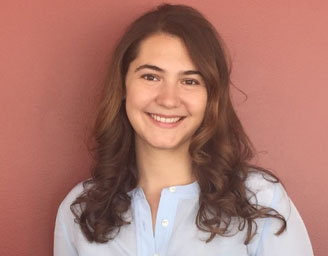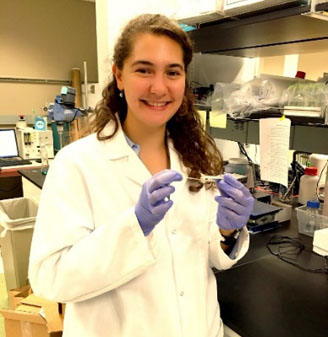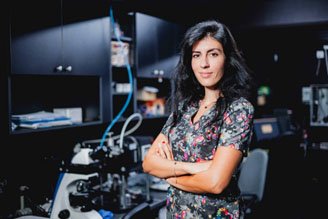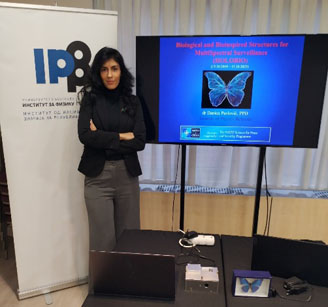On 11 February, the International Day of Women and Girls in Science, meet two researchers whose curiosity and love for the natural world inspired outstanding careers in bioengineering and biophotonics.
February 11 marks the International Day of Women and Girls in Science. Mandated by the United Nations, this day draws attention to the fact that – despite some progress – women are still underrepresented in science, technology, engineering and mathematics (STEM) all over the world.
Outstanding researchers from NATO members and partner countries receive support from the NATO Science for Peace and Security (SPS) Programme to investigate and find solutions to emerging security challenges. In celebration of this year’s International Day of Women and Girls in Science, two award-winning scientists who find their inspiration in nature share their stories.
Dr Gozde Durmus
 Dr Gozde Durmus, Assistant Professor, Stanford University
Dr Gozde Durmus, Assistant Professor, Stanford UniversityDriven by a curiosity about the natural world and a desire to solve complex problems, Dr Gozde Durmus is dedicating her career to scientific research. With a background in bioengineering, she has been recognised as one of the “Top Innovators Under 35” by the Massachusetts Institute of Technology (MIT) Technology Review. What she likes the most about science is “the freedom to explore and answer questions that I am curious about, and discover new knowledge, pushing the boundaries of our understanding and technology.”
Gozde’s expertise lies at the intersection of magnetics, nanotechnology and biomedicine. Her work focuses on developing advanced biomedical tools by creating innovative platforms that merge engineering, biology, and microfluidics. In simpler terms, her work helps to find and understand rare cells or molecules by using magnets and tiny particles – a task as complicated as finding a needle in a haystack.
 Dr Gozde Durmus holding a magnetic levitation device in her lab at Stanford University
Dr Gozde Durmus holding a magnetic levitation device in her lab at Stanford University“I find immense satisfaction in the collaborative and interdisciplinary nature of scientific research, as well as its potential to make meaningful impacts on society and serve patients,” says Gozde.
With support from NATO’s SPS Programme, Gozde is leading a new research project aimed at developing a smart device that combines advanced nanotechnology and artificial intelligence to detect harmful microorganisms in water and air. Such a tool could be used to tackle bacterial contamination and improve the detection of pathogens in water and air on an everyday basis. It could also play a crucial security role in rapidly responding to attacks using biological agents, and help save many lives. Her project brings together her team at Stanford University in the United States along with research groups at Ozyegin University in Türkiye, and at the University of Aberdeen campus in Qatar.
Dr Danica Pavlović
 Dr Danica Pavlović in her biophotonics laboratory at the Institute of Physics in Belgrade.
Dr Danica Pavlović in her biophotonics laboratory at the Institute of Physics in Belgrade.Love for nature also motivates Dr Danica Pavlović, one of the recipients of the 2020 L’Oréal-UNESCO national award ‘For Women in Science’. For Danica, being a scientist is a dream job that allows her to express her creativity and innovation.
“The charm of science is that it is dynamic, you are constantly faced with new challenges, and always learn something new.”
Danica’s research in the field of biophotonics (the study of how light interacts with biological systems) enables her to use various biology and physics methods to analyse and characterise different biological processes, structures, cells and tissues. Her work also explores biomaterials and their potential application in technology.
 Dr Danica Pavlović stands beside a screen showing her research, which uses butterfly wing scales as camera pixels.
Dr Danica Pavlović stands beside a screen showing her research, which uses butterfly wing scales as camera pixels.Recently, with support from NATO’s SPS Programme, she completed a research project that used elements from nature to enhance existing technologies. Specifically, she worked on the development of a low-cost, multispectral surveillance camera using butterfly wing scales as camera pixels. In November 2023, Danica presented a prototype of this device – whose performance has the potential to surpass most commercially available thermal cameras – directly to NATO Secretary General Jens Stoltenberg during his visit to Belgrade. This project was the result of collaboration between her team at the Institute of Physics in Belgrade (Serbia) and researchers at the Institute of Physics in Zagreb (Croatia).
How does the Science for Peace and Security Programme help?
The SPS Programme brings together academics, experts and officials from NATO and partner countries who jointly lead research and knowledge exchange activities. Proposals for new activities are assessed based on technical and scientific merit, paying attention to avoid any gender bias and welcoming women-led research and insights. Opportunities for cooperation are announced as calls for proposals on the SPS website. It is also possible to stay up-to-date with the latest opportunities offered by the SPS Programme by subscribing to the SPS newsletter.
Source: nato.int

